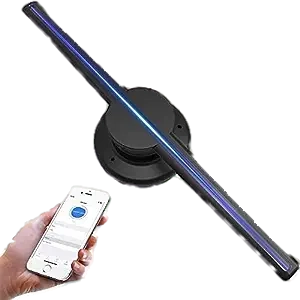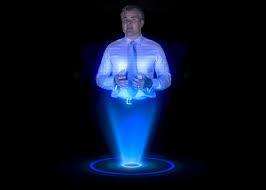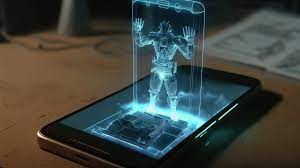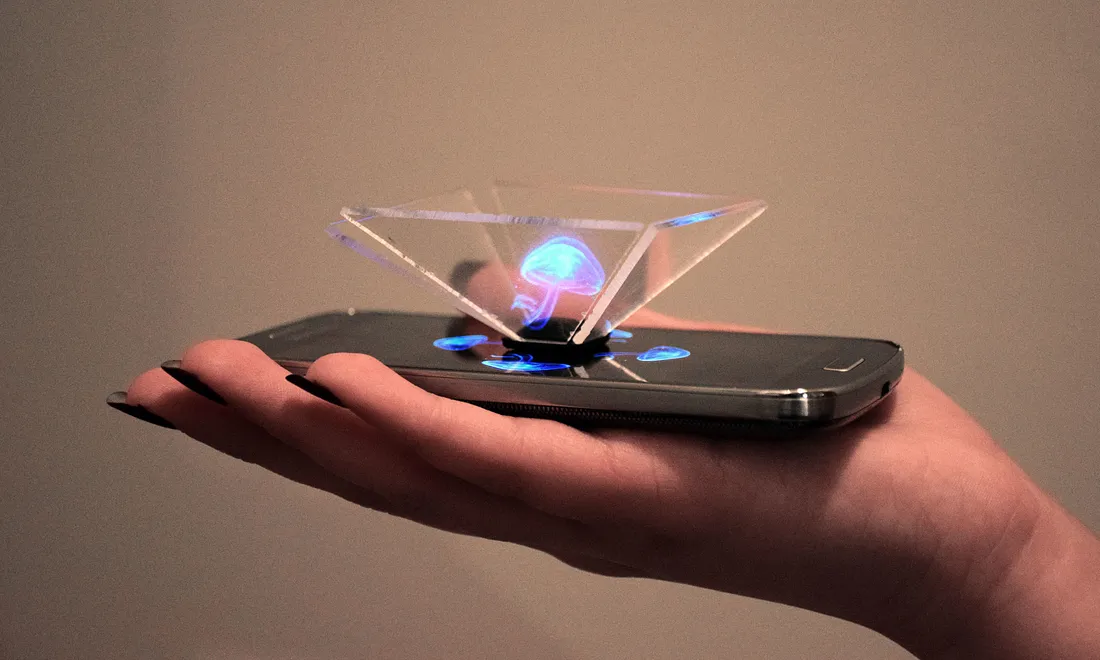Index
Introduction
Holography: A New Way to Communicate and Learn by Hologram Technology
Holography is 3d hologram technology, which is an artful fusion of science and technology, stands as a testament to human innovation and creativity. This captivating field has ushered in a new era of visual experiences, enabling us to interact with objects and concepts in ways that were once confined to the realms of imagination. At the heart of holography lies a process that captures the essence of an object in three dimensions, captivating our senses and sparking a revolution in how we perceive the world around us.
Holography's fundamental principle involves splitting a laser beam into two separate beams. One of these beams is directed towards the object to be recorded, while the other serves as a reference. The two beams converge and interfere, creating an intricate pattern that is captured on a photographic plate. This process records the hologram, a complex and delicate representation of the object's visual structure.
Upon illumination by another laser beam, the photographic plate releases the stored pattern, reconstructing the object's three-dimensional image. This process is akin to magic, as seemingly flat surfaces evolve into lifelike, tangible entities. Through the marriage of science and art, holography has bestowed upon us a remarkable tool for creating and experiencing immersive visual marvels.
The Different Types of Holographic Displays
- 3D Hologram Fan: These mesmerizing devices utilize rapidly spinning blades to create a vortex of air that interacts with light, forming intricate 3D images that appear to materialize out of thin air.

At events and retail spaces, they captivate audiences, creating entrancing displays that defy traditional visual norms. - 3D Hologram Projector: Advancing laser projection techniques breathe life into this category, projecting holographic images into the air or onto surfaces.

These projectors find applications in educational settings, commercial presentations, and artistic exhibitions, inviting audiences to explore the possibilities of 3D visualization. - Hologram Phone and Devices: The integration of holographic displays into modern smartphones and devices has ushered in a new era of personal entertainment and communication.

Users can now interact with 3D content directly from their devices, a testament to the transformative power of holography. - Hologram Box: Compact and portable, these displays open doors to interactive product showcases, art exhibitions, and educational demonstrations.

As holographic content becomes more accessible, these boxes provide personalized gateways to 3D experiences. - Holographic TV: While still in development, holographic TVs hold the potential to redefine home entertainment. These displays could transport viewers into worlds of immersive storytelling, making the boundary between the virtual and physical realms virtually imperceptible.
- Portal Hologram: Blending precision mirrors with laser technology, portal holograms beckon us into alternate dimensions. With potential applications ranging from entertainment to data visualization, these holograms invite us to explore new realities.
How Holography will transform our lives?
- Entertainment: Holograms unlock the potential for creating immersive experiences within the entertainment industry. From 3D concerts that place audiences within the heart of the action to movies that break free from the confines of flat screens, holographic technology introduces a new dimension of engagement.
- Education: The classroom undergoes a revolution with holograms at its forefront. Students can dissect virtual organisms in biology, manipulate physical phenomena in physics, and explore historical events in ways that traditional methods could never replicate.
- Communication: The prospect of face-to-face interactions regardless of geographical distances is tantalizing. Holograms could unite individuals separated by continents, allowing educators, businesses, and families to share moments and ideas in an unprecedented manner.
- Medical Simulation: Holography offers a novel platform for simulating medical procedures. Doctors could practice intricate surgeries on realistic holographic models, enhancing their skills and ultimately improving patient care.
Learning through Holographic technologies
- Anatomy Exploration: Within the anatomy classroom, students could use holograms to dissect a virtual cadaver. This would allow them to explore the intricate inner workings of the human body in three dimensions, gaining insights into different anatomical structures and their relationships.
- Physics Phenomena: In the physics class, holograms could be harnessed to simulate complex physical phenomena. Concepts like the motion of objects or the behavior of light could be visualized in ways that transcend the limitations of traditional 2D displays. Students could interact with these holographic simulations, enhancing their understanding of abstract concepts.
- Historical Time Travel: In history class, students could use holograms to visit historical sites or meet historical figures. This immersive experience would allow them to step into the past, gaining a deeper understanding of historical events and figures in a way that traditional textbooks or lectures could never achieve.
- Artistic Creations: Beyond the confines of conventional subjects, holographic technology could be a canvas for creative expression. Students could create holographic art, design immersive environments, and explore new dimensions of storytelling, pushing the boundaries of artistic innovation.
Holographic technology is still in its early stages of development, but it has the potential to revolutionize the way we interact with the world around us. As the technology continues to develop, we can expect to see even more innovative and exciting applications for holograms in real life.
Applications of holographic technology in real life
- Virtual assistants: Holographic virtual assistants could be used to provide us with information and assistance in a more natural and engaging way.Telepresence: Holographic telepresence could allow us to interact with people in different locations as if they were in the same room. This could be used for business meetings, education, and even social gatherings.
- Medical training: Holographic medical training could allow doctors and other healthcare professionals to practice procedures in a safe and realistic environment.
- Retail: Holographic displays could be used to create immersive and interactive shopping experiences.
- Architecture: Holographic models could be used to visualize and interact with architectural designs before they are built.
These are just a few of the many potential applications of holographic technology in real life. As the technology continues to develop, we can expect to see even more innovative and exciting applications in the years to come.
Challenges
The journey toward mainstream holographic learning is not without challenges:
- Cost: Holographic displays remain relatively expensive, limiting their widespread adoption. As the technology matures and gains traction, economies of scale are likely to drive down costs, democratizing access to holographic experiences.
- Content Creation: The availability of compelling and diverse holographic content remains a challenge. Collaboration between artists, developers, and educators is essential to populate the holographic landscape with captivating narratives that unlock the full potential of this technology.
Conclusion
In conclusion, the convergence of science and art has birthed a technological marvel that transcends traditional visual experiences. Holography stands poised to revolutionize education, entertainment, communication, and even medical training. As we step into this mesmerizing realm, the boundaries of our understanding expand, ushering in a new era of experiential learning and exploration. With each holographic image that materializes before us, we catch a glimpse of the limitless possibilities that lie ahead—a world where knowledge and creativity converge to reshape how we perceive, learn, and interact with our surroundings.Incorporating holographic technology into education offers a powerful avenue for enhancing the learning process. As holograms provide immersive and interactive experiences, they hold the potential to transform classrooms into dynamic spaces of exploration and discovery. Through holographic dissections, historical reenactments, and physics simulations, students can engage with subjects in unprecedented ways, deepening their understanding and sparking their curiosity. As the cost of holographic displays decreases and content creation flourishes, the educational landscape stands on the cusp of a revolution—one that embraces the fusion of science, art, and technology to create a new dimension of learning.
